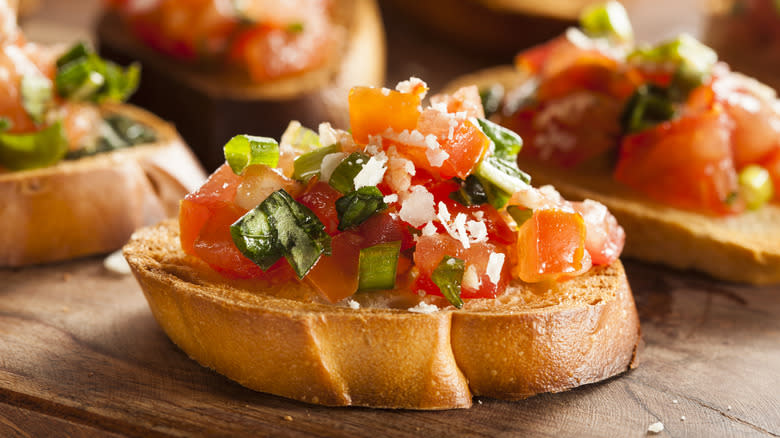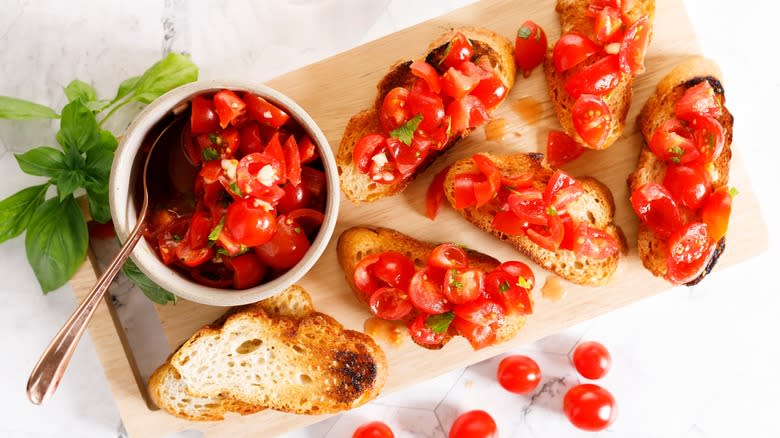The Correct Way To Slice Bread For Delicious Bruschetta

If we're being honest, bruschetta is only as good as the bread that's used to make it. While the tomato topping is an essential part of the recipe, bread shouldn't be an afterthought. After all, it's the vessel holding everything together. It's also just as capable of providing rich flavors, interesting textures, and wonderful aesthetics. So, rather than focus on toppings, it might be time to turn your attention to the bread, starting with how it's sliced.
Depending on the recipe, bread can be sawed into all sorts of sizes and shapes. Both round and oblong loaves can be cut lengthwise to make a giant, wow-worthy bruschetta for a crowd. That same piece can then be sliced into more manageable squares, or into tiny pieces fit for bite-sized canapés — bread can even be sawed into thick strips for dunking into a saucier-style of bruschetta. Of course, there's also the method of making crosswise cuts.
Despite that crosswise cuts may be a bruschetta classic, they actually aren't the most visually appealing. It's for this reason that we recommend modifying the technique and instead, slicing bread on an angle, known as a bias. Cutting loaves in this way has another benefit also; it can work to increase surface area. As a result, this means more toppings can be added without the risk of any ingredients falling off the bread, making for better bruschetta. Not only does bruschetta look visually pleasing, but it offers more deliciousness in every bite.
Read more: The 20 Best Olive Oils For Cooking
Choose The Right Bread, Slice It Properly, And Toast It For A Minute

Any kind of bread can be used, however, some loaves fare better than others. When weighing your options, consider the crumb closely. While an open crumb can cause ingredients to fall through the spaces, an ultra-fine crumb can become too brittle when toasted, but a crumb that's too-soft will just become weighed down by ingredients. Our advice? Seek out a large, rustic-style loaf with a crunchy crust and sturdy crumb. An Italian pane rustico will do the trick, much like homemade sourdough.
To effectively slice bread on a bias, hold a serrated knife at a 45-degree angle, moving the knife in a back-and-forth motion. Slices should be evenly cut to a thickness of about ½ inch. If pieces are too large, cut them diagonally. Once sliced, bread can be toasted. Whether you bake oil-drizzled slices in the oven, toast them in a pan, or char them on the grill is up to you, just remember that it should only take about a minute of toasting for slices to become golden and crisp.
Last but not least, slices can be rubbed with a garlic clove and topped with tomatoes. Of course, you can also take some creative liberties — add a layer of whipped ricotta, drizzle on truffle-infused balsamic, or garnish with a fried basil leaf. Whatever you decide, a perfectly sliced piece of bruschetta is more than capable of handling any topping you toss on it!
Read the original article on Tasting Table.

